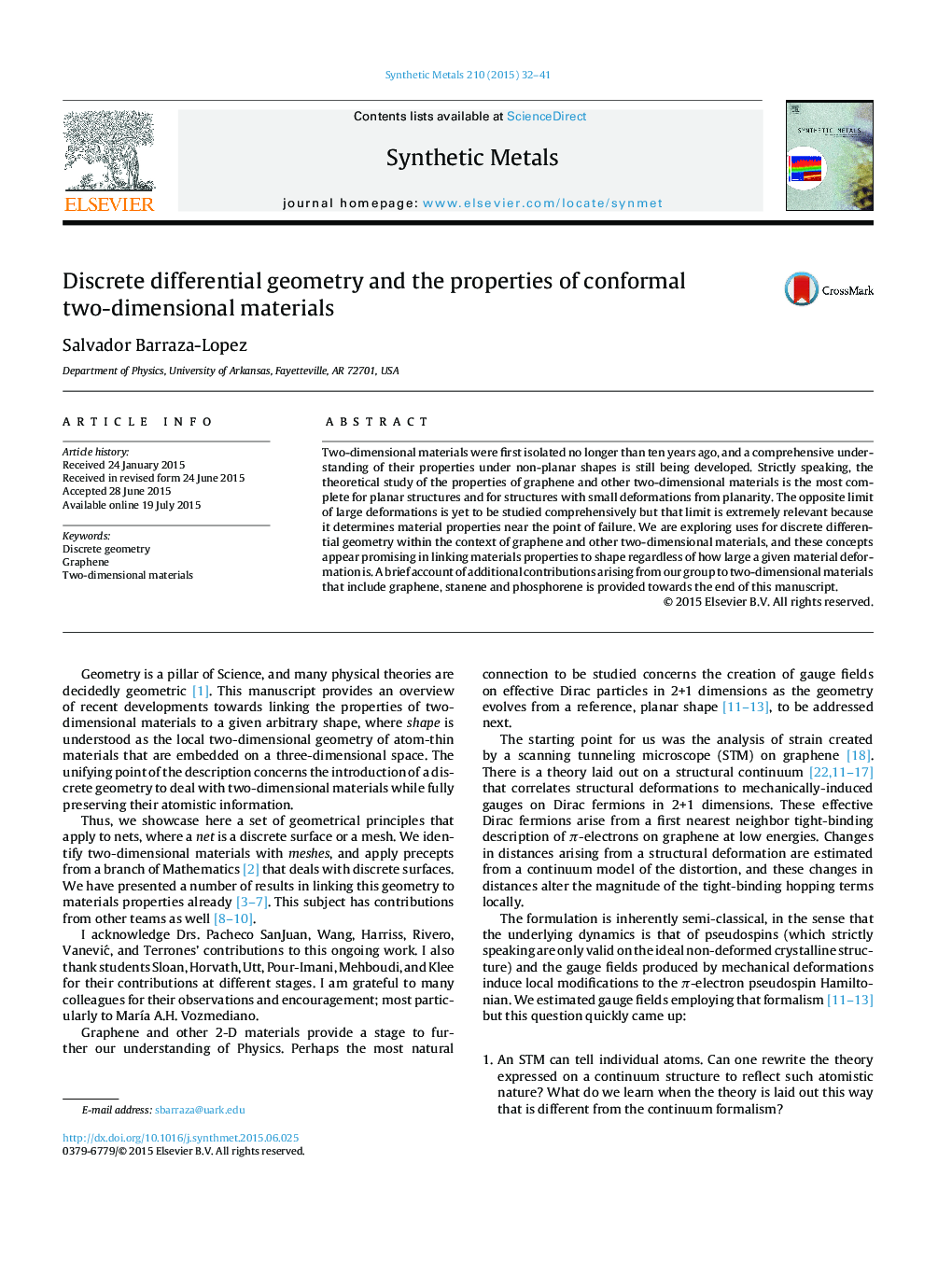| Article ID | Journal | Published Year | Pages | File Type |
|---|---|---|---|---|
| 1440377 | Synthetic Metals | 2015 | 10 Pages |
•Discrete differential geometry used to study graphene.•Shape and electronic properties elucidated.•Additional studies on stanene and phosphorene.
Two-dimensional materials were first isolated no longer than ten years ago, and a comprehensive understanding of their properties under non-planar shapes is still being developed. Strictly speaking, the theoretical study of the properties of graphene and other two-dimensional materials is the most complete for planar structures and for structures with small deformations from planarity. The opposite limit of large deformations is yet to be studied comprehensively but that limit is extremely relevant because it determines material properties near the point of failure. We are exploring uses for discrete differential geometry within the context of graphene and other two-dimensional materials, and these concepts appear promising in linking materials properties to shape regardless of how large a given material deformation is. A brief account of additional contributions arising from our group to two-dimensional materials that include graphene, stanene and phosphorene is provided towards the end of this manuscript.
Graphical abstractFigure optionsDownload full-size imageDownload as PowerPoint slide
